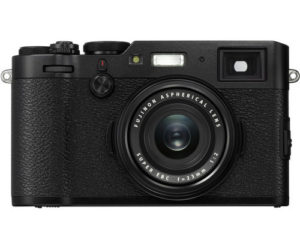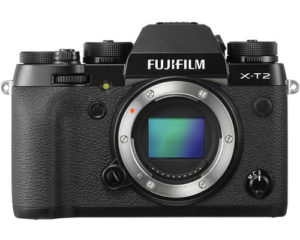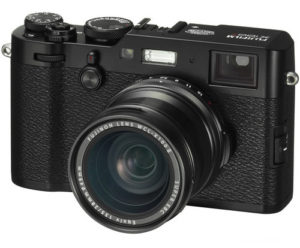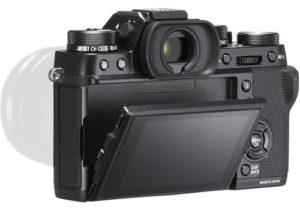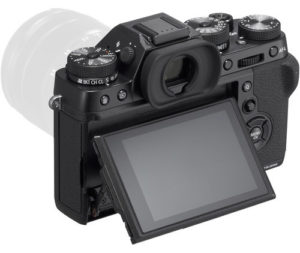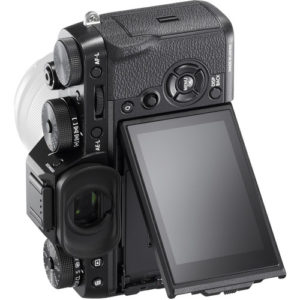The Fujifilm X Series is made up of two separate strains: the interchangeable lens series and the premium fixed-lens compact series. The X-T2, along with its rangefinder-like sibling the X-Pro2, is the current flagship camera of the interchangeable lens series, while the recently-announced X100T sits at the top of the premium compact range.
Despite being very different products, potential users often have difficulty choosing between the interchangeable lens and premium compact models for the simple reason that they possess many of the same features.
In the case of the X-T2 and X100F, not only do both have the latest 24MP APS-C X-Trans III sensor with an ISO limit of 51200, but they also share the most advanced version of Fujifilm’s hybrid autofocus system with 325 AF points.
If you’re confused about which model to choose, we invite you to read through this comparison preview where we will shed some light on the ten most important differences, from the more obvious such as the lens system to the far less conspicuous. Let’s get started!
Ethics statement: The information supplied in this article is based on the official specifications found on the Fujifilm website and our personal experience with X series cameras. If we get the chance to test the two cameras side-by-side, we will publish a full comparison. We were not asked to write anything about these cameras, nor were we provided any compensation of any kind. Within the article, there are affiliate links. If you decided to buy something after clicking the link, we will receive a small commission. To know more about our ethics, you can visit our full disclosure page. Thank you!
1. Size and weight
Starting with one of the more obvious differences, we have the size and weight of the two cameras.
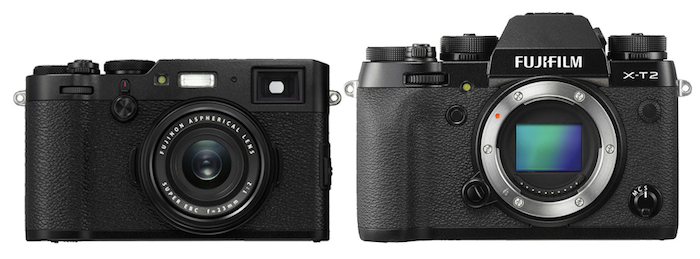
Measuring 126.5 x 74.8 x 52.4mm and weighing 469g, the X100F is slightly smaller and lighter than the X-T2 (132.5 x 91.8 x 49.2mm and 507g). These specifications on their own don’t suggest a big difference but once you factor in the proportions of the X series lenses that you’ll inevitably attach to the X-T2, the advantage of the X100F and its fixed prime becomes clear.
If you are looking to replicate the size and weight of the X100F, the best option is to use very small primes on the X-T2 such as the XF 27mm f/2.8.
2. Interchangeable vs. fixed lens
Closely tied to the issue of size and weight is the nature of their respective lens systems.
The X-T2 is an interchangeable lens camera that accepts any lens with the Fujinon X mount. Depending on the lens mounted, the size and performance of your set-up will vary. For instance, some lenses deliver excellent sharpness or a very shallow depth of field, whereas others are built for speed or work in harsh weather conditions thanks to their weather-sealing.
This contrasts with the X100F’s fixed 23mm f/2 prime (35mm in 35mm terms). Curiously, it is the only element of the X100 series that hasn’t been updated or modified since it began in 2010. It is capable of excellent sharpness at mid and long focus distances from f/2. It’s only real weak point is that the results can be soft at close focus distances. If you are curious to know more, you can check out our X100T vs XF 23mm f/2 comparison where you can see how the X100 lens performs.
Despite the lens being fixed, there are actually two ways to change your field of view on the X100F.
The first is the digital teleconverter, which lets you digitally zoom to 50mm or 70mm (35mm equivalent) by cropping the frame and upscaling the image back to 24MP. This feature is currently unique to the X100F and X70 premium compacts but only produces a JPG file.

The second is to adapt one of two conversion lenses available for the X100 series: the WCL-X100 (wide-angle) or TCL-X100 (tele). The former broadens the lens’ field of view to an equivalent of 28mm, while the latter extends the lens to the equivalent of 50mm. To coincide with the release of the X100F, Fujifilm announced the mark II versions of these converters. Unlike the previous converters, the X100F can automatically detect if they are attached and correct aberrations accordingly without the need to manually select the correction in the menu.
My only caveat is that these conversion lenses increase the bulk of the X100F, which isn’t ideal if you’re after a very compact system.
3. Built-in viewfinder
Unique to the X100 and X-Pro series is the hybrid viewfinder located on the left-hand side of the body. It allows you to switch between optical (OVF) and electronic (EVF) options via a switch lever on the front of the body. On the X100T and X100F, there is also an Electronic Rangefinder option which displays the EVF area in the bottom right corner of the OVF, letting you judge focus and exposure. In OVF mode, you get parallax correction for both the outline frame and focus point.
The optical viewfinder is a Reverse Galilean type with 92% coverage of the field area and an electronic bright frame display, while the electronic viewfinder is a 0.48-inch, 2.36 million-dot LCD with 0.67x magnification and a refresh rate of 60fps.
The X-T2 only has a centrally-placed electronic viewfinder but it is one of the best on the market. It features an 0.5-inch OLED screen with 2.36 millions dots of resolution and 0.77x magnification. Like the X100F, it has a standard 60fps refresh rate but can be increased to 100fps with the boost mode.
4. Rear monitor
Many were hoping that a tilting monitor would come to the X100F given that most other X-series cameras have one, but in the end Fujifilm opted to keep the fixed 3-inch 1040K-dot LCD monitor of its predecessor.
The X-T2’s monitor, by contrast, takes the tilting mechanism to new heights. Not only does it tilt up 90 degrees and down 45 degrees but it also flips out 70 degrees to the side. This makes it perfectly useable for shots in either landscape or portrait orientation even at awkward angles. It too is a 3-inch type but with 1.62 million dots of resolution.
Neither screen is touch sensitive but this is remedied by the handy toggle on the rear that lets you change the AF point on the fly.
5. AF-C custom settings
As mentioned in the introduction, both the X-T2 and X100F feature the same advanced hybrid autofocus system. Of the 91 points across the sensor, 49 are phase detection and exist on a 7×13 grid in Zone AF and Wide/Tracking modes. In Single Point mode, these points can be subdivided into a 13×25 grid, producing 325 points in total.
The X-T2 also comes with three parameters to control the continuous autofocus. Tracking Sensitivity allows you to specify whether the camera should retain its focus and wait for the subject to reappear from behind an obstacle, or switch focus to a completely different subject. Speed Tracking Sensitivity defines the camera’s tracking characteristics based on changes to the subject’s speed. Finally, Zone Area Switching lets you to specify which part of the selected focusing zone should be given priority in Zone AF.
You can choose between five AF presets from AF-C Custom Settings on the X-T2. These are: Multi-Purpose, Ignoring obstacles, Accelerating/decelerating subjects, Subjects that suddenly enter the frame, and Erratically moving subjects. The sixth Set can be customised.

The X100F lacks these options and its performance is based on the first Set (Multi-Purpose).
6. 4K vs. Full HD video
The X-T2 is the first X-series camera to shoot 4K UHD at 24, 25 and 30fps at a bit rate of 100Mbps. It has a maximum recording time of up to 30 minutes with the vertical battery grip or 10 minutes without.
Even more exciting is its brand new flat F-Log profile via HDMI which can be graded in post-production. Those happy with the in-camera results can choose to apply Fujifilm’s full range of Film Simulation Modes to video footage instead.
Complementing the new video capabilities is a built-in 3.5mm microphone jack and micro HDMI port (4:2:2 8-bit). The red movie record button has also been replaced by a clearly defined Movie mode on the Drive dial. This means you can use the shutter button to start and stop recording.
Below is an example of the 4K footage you can expect from the X-T2:
These advanced capabilities contrast with the X100F and its Full HD recording capabilities and maximum recording time of 14 minutes. Movie recording can only be done by pressing the red record button. Despite the lack of 4K recording, Fujifilm made an improvement to video in Full HD in comparison to the previous generation of cameras. The video below was shot with the ACROS profile on the X-Pro2 whose video settings are the same as the X100F. As such, it should be a good preview of what the camera can do.
7. SD card slots
Returning to the bodies of the two cameras, there is another physical difference we’ve yet to touch upon: the SD card slots.
The X-T2 has a dual SD card slot that accepts UHS-II memory cards. You can continuously record images to the second card after the first is full, send RAW files to one card and JPGs to the other, or create a back-up by recording the same RAW and JPG files to both cards. The X100F, on the other hand, only has one UHS-I compatible slot.
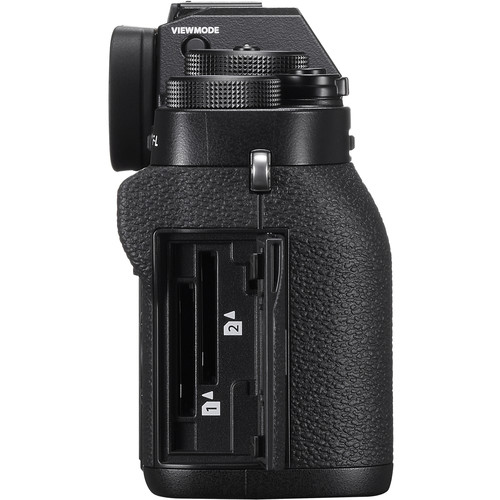
8. Shutter speeds and flash
Before we begin this section, it is worth pointing out that the X-T2 uses a standard focal plane shutter, while the X100F employs a leaf shutter.
On the X-T2, the maximum mechanical shutter speed is 1/8000s, which is twice as fast as the X100F’s maximum speed of 1/4000s. With the electronic shutter activated, both cameras are capable of speeds of up to 1/32000s.
The only hindrance is that the leaf shutter can produce an odd-looking bokeh if you shoot at 1/1000s or above with the fastest apertures of f/2 or f/2.8. This is because the leaf shutter cannot clear the image circle quickly enough. Trying to shoot beyond 1/1000s will also result in an improper exposure, though the camera will warn you of this by displaying the shutter speed in red. To counteract this, the X100F comes with a handy 3-stop built-in ND filter but you can also use the electronic shutter to solve this.
There are a couple of advantages to the leaf shutter of the X100F. Not only is it very quiet, but it also allows you to sync flashes up to 1/4000s, which is much faster than the 1/250s sync speed of the X-T2. With the X-T2, you can have HSS with select flashes such as the EF-X500.
And while on the topic of flash, it is also worth mentioning that the X100F has a built-in flash while with the X-T2, you must attach the supplied EF-X8 unit to the hot shoe. Both cameras are compatible with all the functions of the new EF-X500 unit.
9. Continuous shooting and buffer
Although both cameras are capable of continuous shooting speeds of up to 8fps with the mechanical shutter, the X-T2 has the added advantage of being able to reach 11fps with the vertical battery grip. There is also a 14fps option with the electronic shutter.
Logically, the X-T2 also has a larger buffer memory than the X100T. For instance, at 8fps with the losless compressed RAW option, it can fire off 33 frames in a row, while the X100T can only manage 25.
10. Vertical battery grip and battery life
The VPB-XT2 is the vertical battery grip for the X-T2. Though entirely optional, it has been marketed as a must-have accessory if you want to make the most out of the flagship camera.

It houses two additional batteries that work with the camera’s main battery to enhance the performance of the camera. By turning the switch on the grip from Normal to Boost, you gain access to many improvements, some of which have already been mentioned above:
- the possibility to shoot around 1000 frames before recharging
- up to 30 minutes of 4K recording
- 11fps burst (mechanical shutter)
- access to important buttons and dials in portrait orientation (e.g. AF joystick, Q button)
- headphone jack
- 9v input to charge both batteries simultaneously with the supplied AC adapter
The lack of a battery grip for the X100F makes sense as the camera isn’t intended for sports, fast action or video recording, all of which consume battery life more rapidly. It would also go against the ethos of the series by making the camera much less compact.
Although both the X-T2 and X100F use the new NP-W126S battery, the X-T2 has a better battery life, managing 340 frames on one charge versus the 270 frames of the X100F. However, you can raise the number of frames to 390 on the X100F by using just the optical viewfinder.
Conclusion
Despite the fact that X-T2 and X100F share a number of characteristics, their target markets are actually quite different as we’ve seen throughout this article.
The X-T2 has been designed as a primary workhorse for a wide range of genres. Attach a simple prime lens and it transforms into a powerful yet discreet street or documentary camera. Mount a weatherproof tele-zoom such as the XF 100-400mm f/4.5-5.6 instead, and you have the ideal companion for challenging sports and wildlife photography. It is a robust and versatile tool that can serve a professional or advanced amateur for whatever work comes his or her way, be it photography or video related.
The X100F is much more of a niche product compared to its high-end sibling. Being smaller and lighter than the X-T2, it primarily suits street, documentary and event/wedding work where speed and discretion are paramount. This is emphasised by Fujifilm’s choice to give it a 35mm equivalent lens – an ideal field of view for these genres. And where it lacks in terms of high-end video capabilities and burst speeds, it more than makes up for in extra features such as the hybrid viewfinder, built-in ND filter, and quick flash sync speeds. My only real complaint concerns Fujifilm’s continued resistance to give it a tilting touchscreen, though I fully admit this is a personal gripe and not everyone shares this view.
Check the price of the Fujifilm X-T2 on
Amazon | Amazon UK | B&H Photo | eBay
Check price of Fujifilm X100F on
Amazon | Amazon UK | eBay | B&H Photo
Second-hand Fujifilm cameras on

